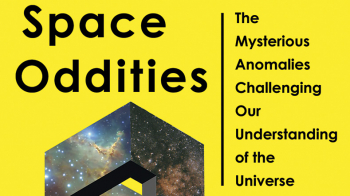Inspired by CERN’s international teacher programme and visits to other major labs, Joe Muise has found a powerful way to inspire physics students.

Teaching modern physics to high-school students presents many challenges: overpacked curricula focusing on classical physics; the depth of knowledge needed by students (and teachers) to understand these topics; and students being over-focused on grades and university admissions. By exposing my students to the work being done at major research laboratories around the world, I have managed to find a way to overcome many of those obstacles.
Some time ago, British Columbia removed provincial examinations, giving teachers a bit more freedom to make additions to their curricula. I chose to insert small one- or two-day units throughout the year, which give my students multiple exposure to modern physics topics. These short introductions over a two-year period mean that physics students don’t need to know all the fine details, which decreases their stress and concerns.
Knowledge sharing
Physics teachers are lucky to have access to high-quality professional development via workshops run by CERN, LIGO, the Perimeter Institute (which produces excellent resources for use in physics classes) and others. These often-week-long events give teachers an overview of how a given research facility works, in the hope that they will bring that knowledge back to their students. Along the way, the teachers attend lectures from leading researchers and see first-hand careers in the field that they can bring back to share with their class.
I have been fortunate enough to attend workshops at these facilities. I have also taken part in a research experience at SNOLAB, brought students on tours of TRIUMF and mentored my students as they conducted research at the Canadian Light Source. All these experiences have given me the knowledge and confidence to introduce the facilities and the work done at them to my students in a way that hopefully piques their curiosity.
The pieces provide a starting point for conversations around what these decommissioned parts were used for and the kind of science they supported
While at CERN for the 2019 international teacher programme, I had the opportunity to visit both the CMS and ALICE detectors and to attend lectures from renowned particle physicists. We spent time in S’Cool LAB and visited many of the behind-the-scenes parts of CERN. While all of these experiences left an imprint on my teaching, it was during quiet visits to what was then called the Microcosm garden – which hosts decommissioned pieces of accelerators and detectors as a form of art – that helped transform the physical space in my classroom.
In 2022 my school in British Columbia renovated a large, old classroom to become our new physics lab. Knowing that I had more space to work with than before, I was inspired to start building my own version of the Microcosm garden on my classroom walls. I soon connected with the outreach team at TRIUMF who were excited to help get my project started with a photomultiplier tube, a control panel from a xenon-gas handling system, a paddle scintillator and a light guide. Since then, I have added a Lucas cell from SNOLAB, a piece of the electron gun from the Canadian Light Source and, most recently, a small-strip half-gap prototype from the New Small Wheel upgrade of the ATLAS detector. The pieces provide a starting point for conversations with students around what these decommissioned parts were used for, and the kind of science they supported.
Equipped with some knowledge of what modern research in the field looks like, I have successfully built a system where I am able to inspire students to want to study physics. Since attending my first major workshop in 2018, I have seen an increase in the number of students entering physics majors. Some of them have already gone on to internships at CERN and TRIUMF, after getting their first exposure to these organisations in my classes. My hope is that by having pieces of the facilities I talk about displayed on my classroom walls, this will further inspire more of my students to want to learn about them, possibly setting them on paths to careers in physics.








